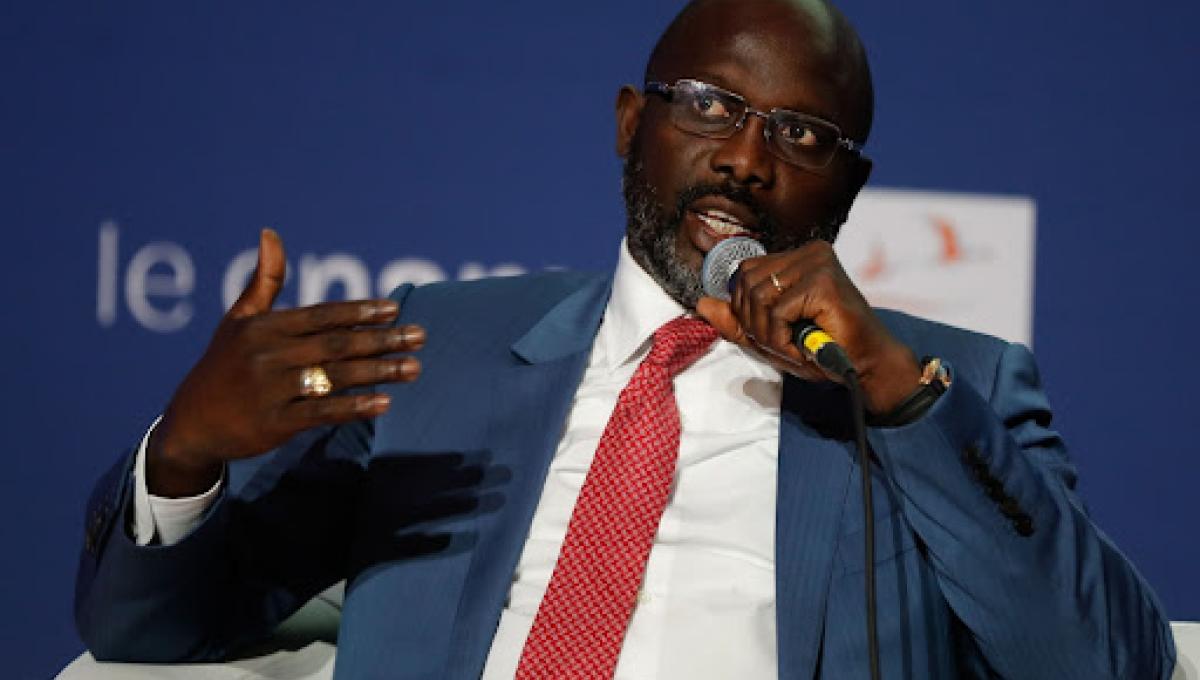Liberia: “Nowhere Else to Go”

— At-risk youth linger as Weah’s drug rehab project stalls for funding
Paul Sumo, now in his 40s, has struggled with drug addiction from his teens. He and other disadvantaged people in the Doe community, a formal settlement in Monrovia, roam from one ghetto to another harassing individuals to grab their possessions.
“Big Sis, it's hard to stop this habit (doing drugs), because I don't have anywhere else to go,” he said.
Disadvantaged youth are commonly referred to as “Zogos and Zogesse”, apparently because of their perpetually poor lifestyle, substance abuse, crime, poverty, and misery overall. They mostly reside in slums that make up 70 percent of Monrovia’s population, according to a Cities Alliance report.
This is mainly as a result of the long civil war that ended in 2003. Many of them in Monrovia and its environs survived on meager jobs like finding passengers for commercial vehicles, washing cars — and yes — petty theft.
In June of this year, president George Weah in partnership with the United Nations launched a US$13.9 million national fund drive in support of his government-led initiative to rehabilitate and empower at-risk youth. The UN and other partners helped to carry out this effort. He pledged US$1 million to the program.
“After piloting and assessing the success of the SEED project, my Government has endorsed a plan by the Inter-Ministerial Steering Committee and the One UN System for an at-risk-youth Empowerment Program that will further rehabilitate and empower them,” Weah said.
The 30-month project could see Sumo and 150,000 others, as well as over 10,000 ghettoes across the country rehabilitated, mentored through vocational skills training, social integration and employment, according to the program national steering committee, chaired by the ministry of youth and sports.
Since the launch of the project, the government and its partners have yet to begin the implementation process. The cash committed by President Weah is insufficient to start the program, according to Oxford Brown, Ministry of Youth and Sports Public relations officer. Partners have yet to contribute, therefore they are still waiting.
The United Nations Population Fund (UNFPA) was contacted through email on October 11, but the agency has not responded to the email.
“I don't want to lie, this life is hard to live, but it [is] just that we tried to stop smoking, buh no way. Because we have nowhere to go, so we can sleep in people's zinc shacks,” said Martin David.
The action taken by Weah and the international community is not the first of its kind in the country. Several programs have been carried out over the years in an effort to restore and improve the lives of young people in danger around the nation.
Despite all of these initiatives, it still seems as though nothing is being done to combat drug abuse. The Liberia Drug Enforcement Agency (LDEA) has continued to seize and destroy illicit drugs that enter Liberia, in an attempt to reduce the negative impact of these drugs on the lives of Liberians.
According to Liberia’s Youth and Sports Minister, D. Zeogar Wilson, the government’s commitment to youth development and empowerment through the project is broadly focused on four thematic areas: Creating the Enabling Environment, Training, Recruitment and Placement, Promoting Sports and Recreation and Social Protection and would be implemented in three phases.
He says phase 1 will focus on the selection, orientation, and rehabilitation of beneficiaries; Phase 2 on capacity building, vocational skills training, and social reintegration, while Phase 3 will focus on job creation and linkages to business support services.
Jefferson B. Knight, Director of the New Life Recovery Center in Marshall, Margibi county, said if the project must meet its objectives and goals the government must work with institutions focused on addressing the plights of disadvantaged youth across the country.
“We see the same groups coming up every night because they know money is in the project. The money is not reaching the right institutions,” he said.
“Even during the launch, most of the institutions that we know are working with these people were not invited. So I think what needs to be done is for this administration to reach out to institutions working in the sector and access their capacities. For us one of our greatest needs is TVET.”
Knight's Center is among fewer private institutions that is providing assistance to disadvantaged youth. It was founded in 2013.
Israel Samuel Roberts, a former drug addict, who recovered at the Recovery Center in Marshall, said he would be willing to serve as an inspiration to other drug users for the project.
Robert was hooked on narcotics for eight years, and used to smoke “coco” and heroin, also known as “Italian White” or “Thai-girl”. But he has now recovered, and expressed excitement at the prospect of working with programs to assist at-risk youth.
The government has failed to pass the amended drug law, making drug abuses bailable or non-bailable. The law calls for people arrested with narcotics to be arrested and be made to pay two times the cost of the drugs in their possession as a bail bond.
Liberia is one of the poorest countries in the world, being quite vulnerable to drug trafficking and abuse. This is due to a lack of strong laws, infrastructure, and resources, allowing drug traffickers to transfer significant amounts of drugs undetected, according to the United Nations Office on Drug and Crime (UNDC). Recently, with the help of well-verified intelligence from the US government, the Liberia Drug Enforcement Agency (LDEA) and the National Security Agency (NSA) arrested Cocaine Worth US$100M from a 31-year-old Guinea-Bissauan national identified as Malam Conte.

